Introduction to Achilles Tendinopathy
The Achilles tendon is the largest in the body, connecting the calf muscles to the heel bone. Achilles tendinopathy is a condition in which the Achilles tendon becomes irritated, weakened, or degenerated. Achilles tendinitis, a related but distinct condition, is one of the most common causes of Achilles tendon pain, which often requires early diagnosis and treatment to prevent complications.
Unlike acute tendinitis, which is a short-term inflammatory process, tendinopathy is a longer-term condition that may involve structural changes in tendon fibres. This condition can limit mobility, reduce performance, and, if left untreated, increase the risk of rupture. It’s common among runners, athletes and active individuals due to repetitive stress and loading. Achilles tendonitis can also affect individuals who are less active, making it a condition that affects all levels of activity.
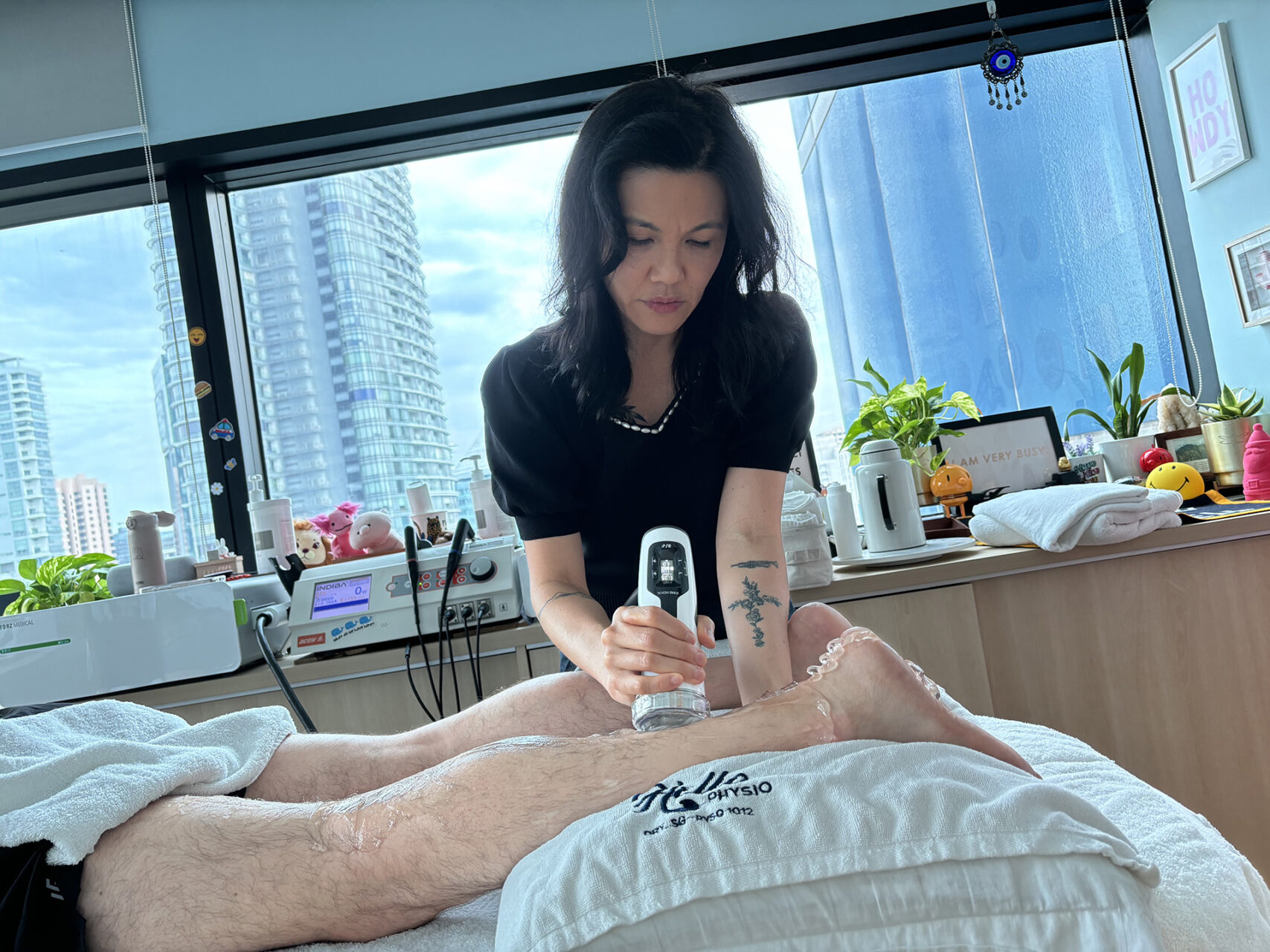
Anatomy of the Achilles Tendon
The Achilles tendon is the largest and strongest tendon in the body. By transmitting force from the calf muscles to the heel, it plays a vital role in walking, running and jumping. Its limited blood supply means that, once injured, healing can be slower than in other tissues. The tendon’s function is critical for propulsion and stability, so injuries are particularly disruptive. Maintaining the health of both Achilles tendons is crucial to prevent injury and heel pain. Achilles tendonitis is more common in men than in women, which may be due to differences in activity levels or the structure of the Achilles tendon.
Types of Achilles Tendinopathy
Achilles tendinopathy comes in two main forms: non-insertional and insertional. Non-insertional Achilles tendinopathy affects the mid-portion of the tendon, typically 2 to 6 cm above the heel bone, and is usually caused by repetitive overloading in running or jumping activities.
Insertional Achilles tendinopathy, sometimes referred to as ‘insertional Achilles problems’, involves pain and degeneration at the point where the tendon attaches to the heel bone. In insertional cases, pain, swelling and stiffness are often felt at the back of the heel, particularly during activities such as uphill running or sports that require explosive push-off. Treatment plans differ slightly for each type due to variations in tissue stress and load tolerance.
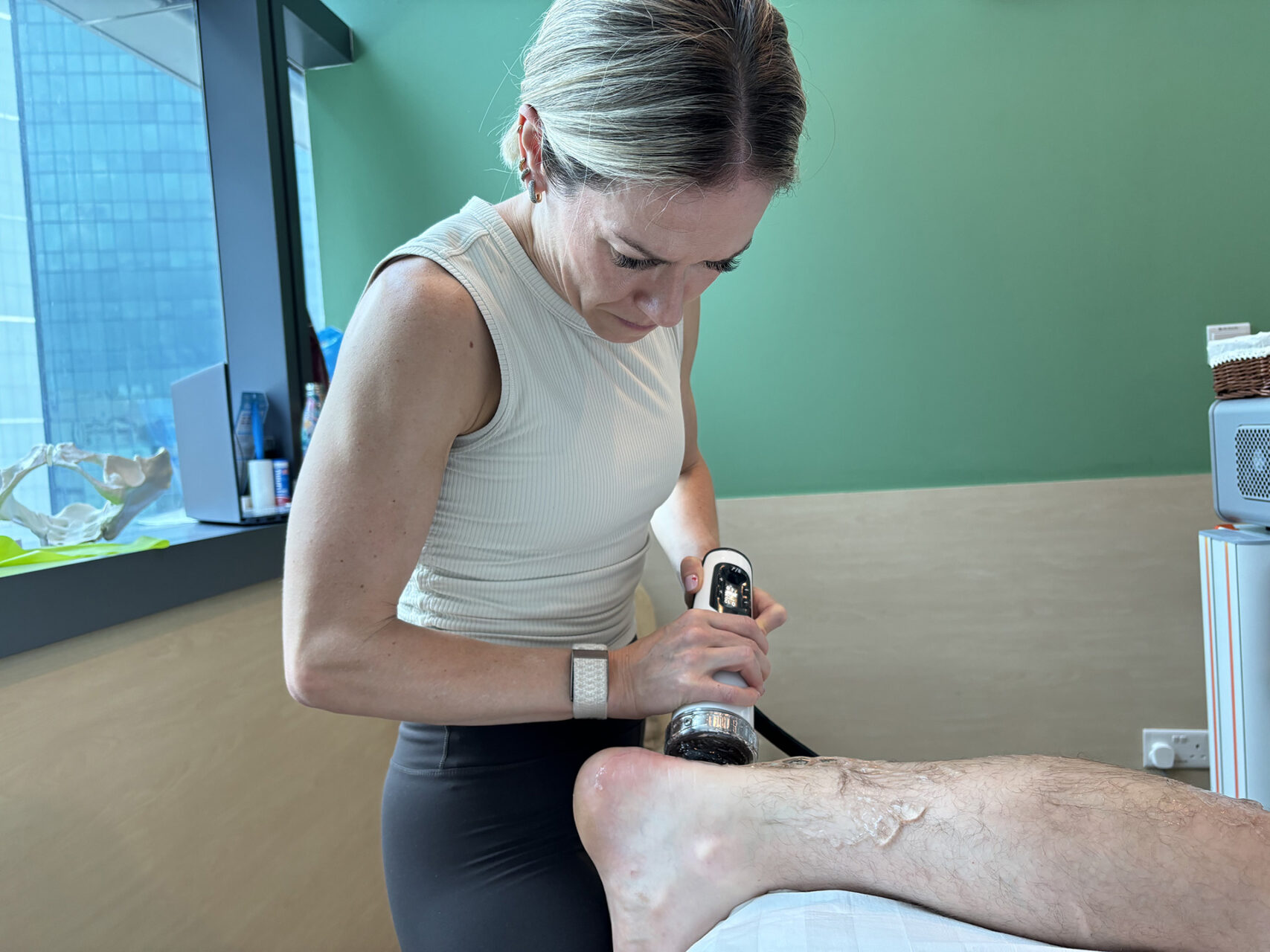
Causes and Risk Factors
Taking a detailed medical history is crucial for identifying underlying causes and risk factors. Recognising the symptoms of Achilles problems early can prevent progression. Most cases of Achilles tendinopathy are due to overuse and repetitive strain, often from training errors such as a sudden increase in running mileage or intensity. Biomechanical factors, such as flat feet, high arches, or tight calves, can add extra strain. Poor footwear or a sudden change to less supportive shoes can contribute.
Systemic factors such as age-related degeneration and inflammatory conditions can also increase susceptibility. People aged 30 to 50 are most commonly affected by Achilles tendonitis, so it’s essential to address risk factors early in this age group.
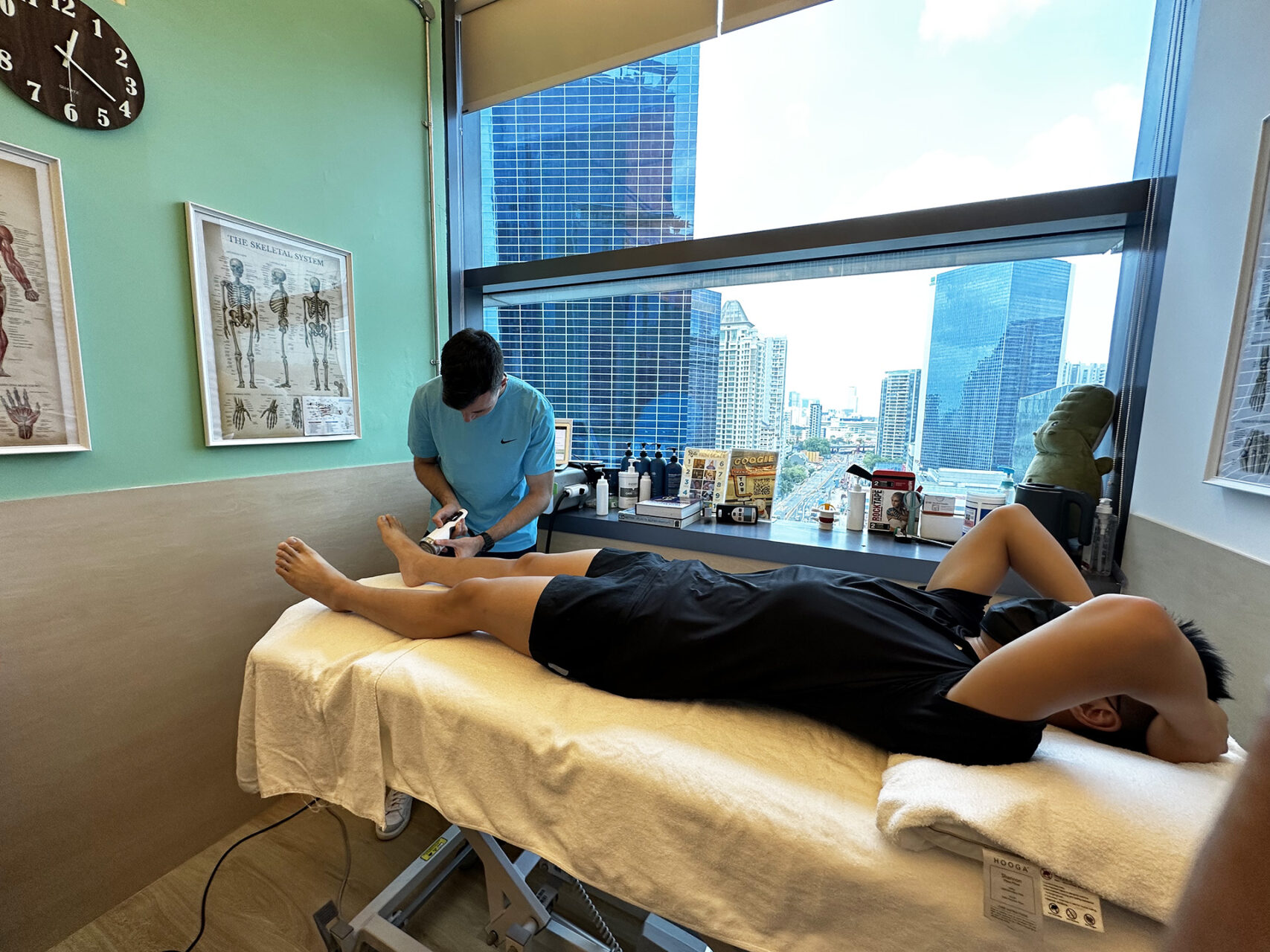
Achilles Tendinopathy Symptoms and Diagnosis
Achilles tendinopathy symptoms typically cause morning pain and stiffness, accompanied by swelling in the affected tendon. Heel pain is a common complaint, especially during activity. The pain worsens with activity and eases with gentle movement. Diagnosis begins with taking a detailed medical history, followed by a clinical examination and a movement assessment. An ultrasound or MRI may help confirm inflammation or degeneration and rule out more serious injuries, such as tears.
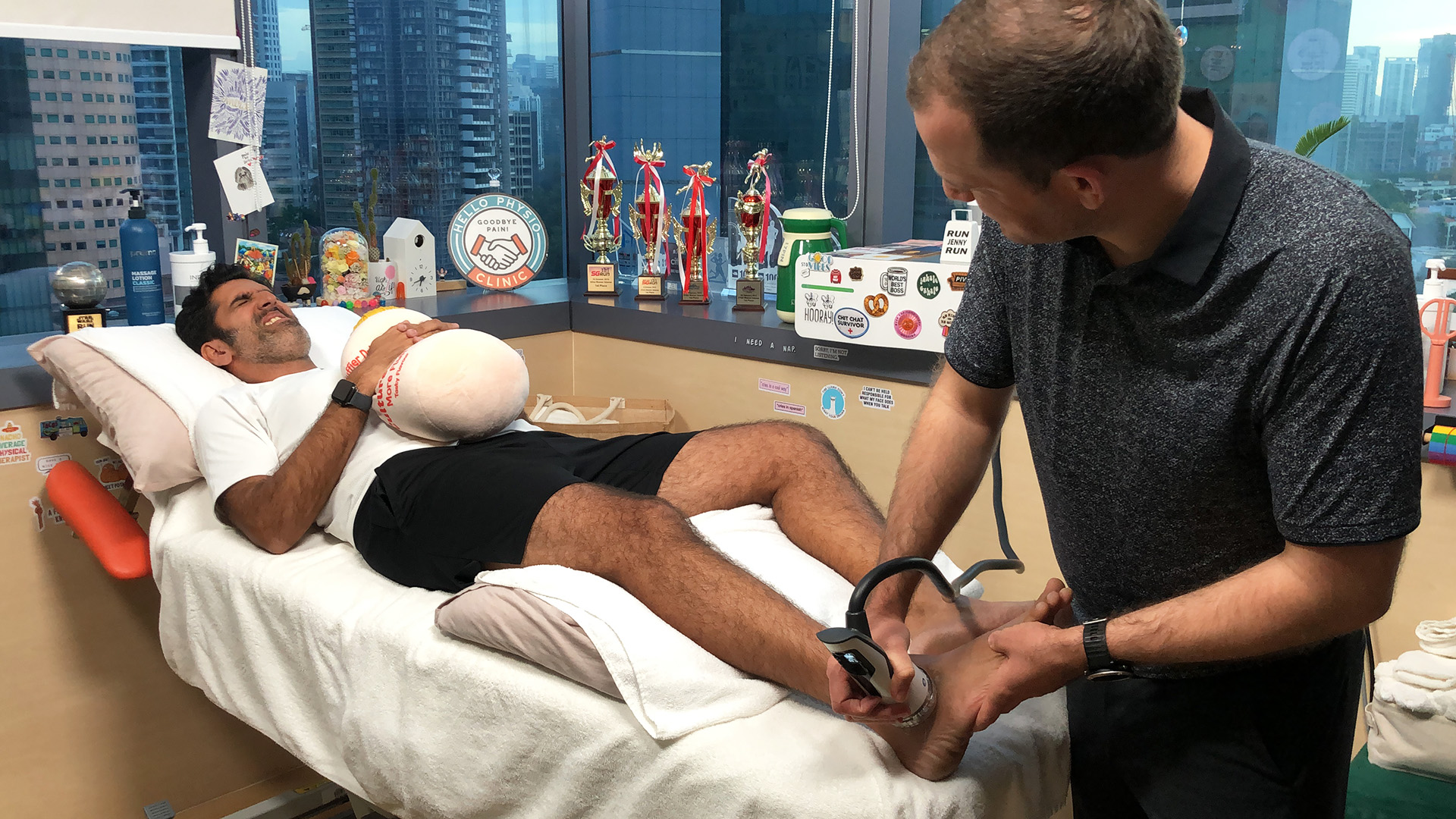
Evidence-Based Achilles Tendinopathy Treatment
Achilles tendinopathy treatment combines progressive loading exercises, manual therapy, and adjunct modalities such as Shockwave Therapy, INDIBA® Activ, EMTT, and Dry Needling to accelerate healing and prevent recurrence.
Load management is key as modifying activities allows for healing while maintaining strength. Progressive loading programs, including eccentric and heavy-slow resistance exercises, are essential for tendon remodelling. Rehabilitation exercises should also be tailored to the individual’s pain tolerance so that the activity remains within safe pain zones to optimize healing and prevent flare-ups.
Manual therapy enhances ankle mobility and facilitates healthy tendon gliding. In persistent or chronic Achilles tendinopathy, advanced modalities can accelerate recovery. Shockwave Therapy stimulates cellular repair and blood flow. INDIBA therapy boosts circulation at the molecular level to promote healing. Dry Needling targets calf muscle tension that can overload the tendon, and EMTT can be used in stubborn cases to stimulate deep tissue regeneration. Using a heel lift in the shoe can also help reduce tension on the tendon during recovery.
These modalities are most effective when used as part of a comprehensive Achilles tendinopathy treatment plan tailored to the individual patient.
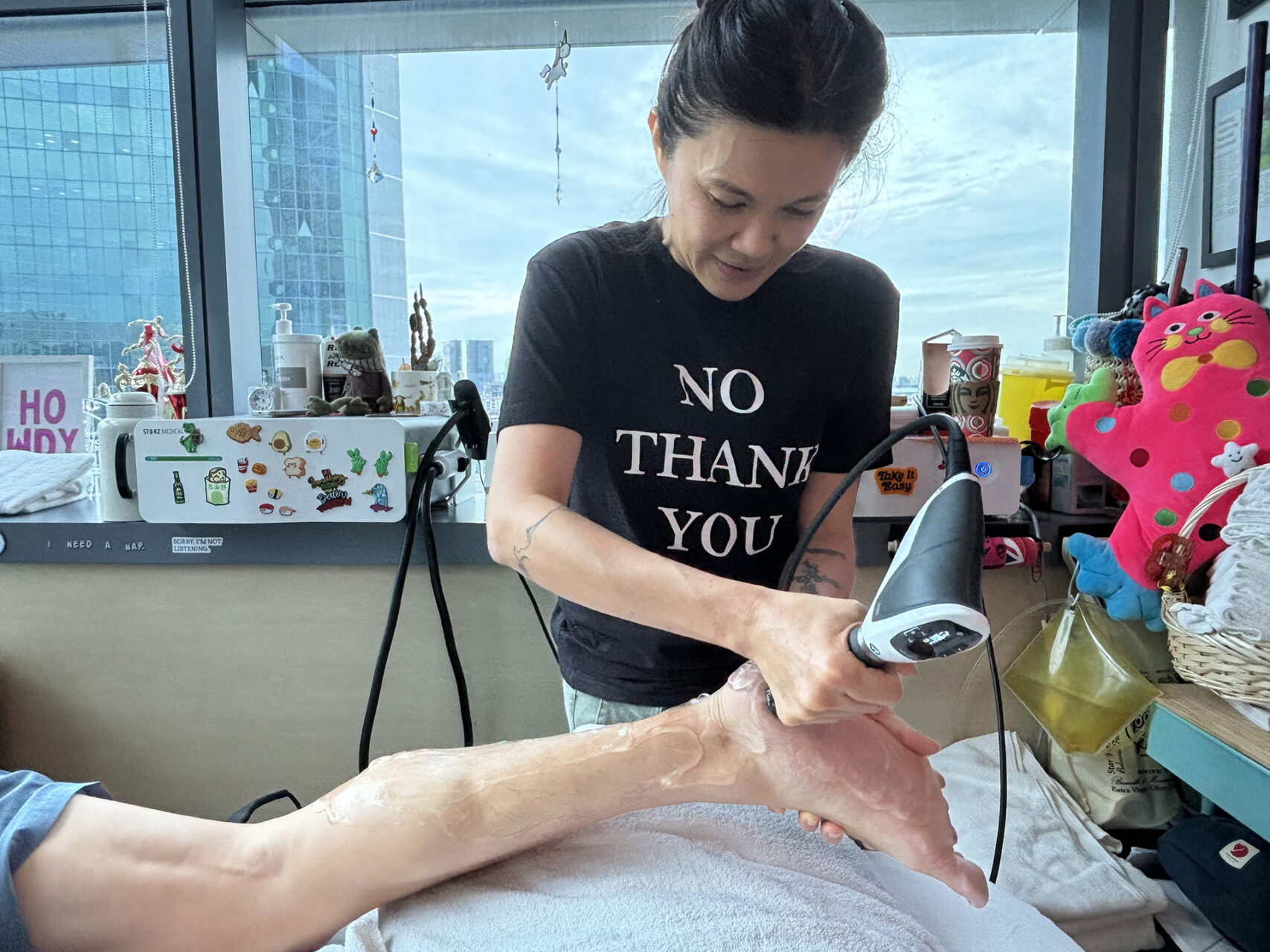
Surgical Intervention
When conservative treatment for Achilles tendonitis or tendinopathy doesn’t provide sufficient relief, Achilles tendinopathy surgery may be considered as an option. Surgery aims to address persistent symptoms by repairing or removing the damaged parts of the Achilles tendon, thereby reducing pain and promoting healing.
Surgical options range from open surgery to minimally invasive techniques, depending on the extent and location of the tendon damage. In more complex cases, tendon transfer or grafting may be necessary to restore Achilles tendon function. These interventions are designed to enhance mobility and to reduce the risk of additional complications, such as chronic pain or restricted movement.
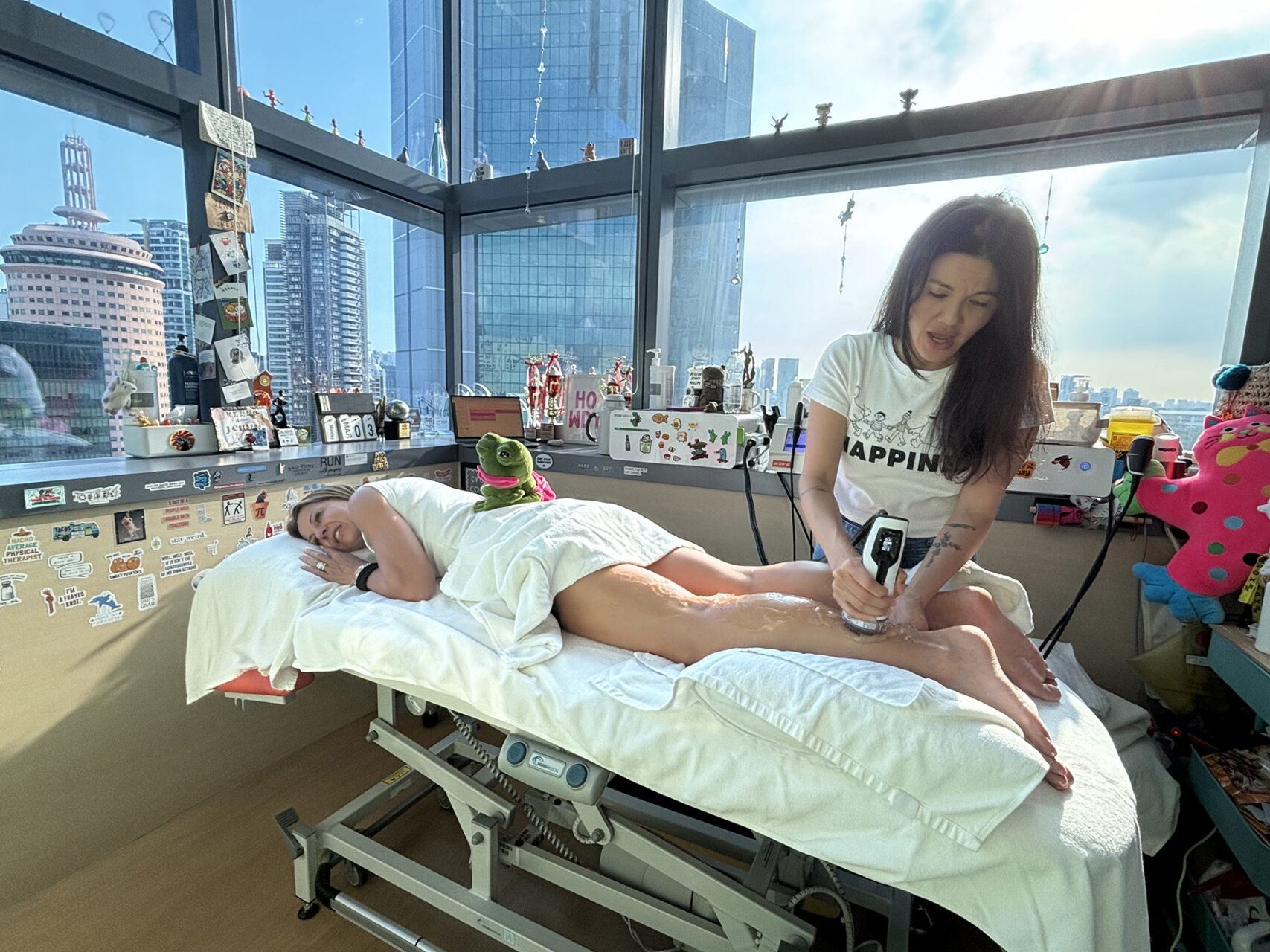
Rehabilitation and the Return to Sport
Achilles tendinopathy rehab must be gradual and progressive. Once pain and swelling are under control, higher-load activities are gradually introduced. Strengthening targets not only the calf muscles but also the hips and core to improve overall biomechanics. Gait retraining, Achilles tendinopathy exercises, and footwear assessments help ensure that movement patterns don’t place excessive stress on the tendon, thereby reducing the risk of recurrence.

Home Care and Self-Management
Self-care supports clinic-based treatment. Achilles tendinopathy exercises begin with regular calf and ankle stretches to improve flexibility. Strengthening exercises such as heel raises help maintain tendon resilience. Ice can be used for acute flare-ups. Supportive footwear or temporary heel lifts can also reduce the strain on the tendon during recovery.
Footwear and Orthotics
Choosing the right footwear is crucial in both preventing and managing Achilles tendonitis and other Achilles tendon injuries. Good-quality supportive shoes with proper arch supports and cushioning reduce strain on the Achilles tendon, especially during daily activities and exercise. If you are experiencing symptoms, using heel lifts or custom orthotics can further decrease pressure on the tendon and support the foot’s natural alignment.
Avoid worn-out shoes, as they may fail to provide adequate support and contribute to conditions such as retrocalcaneal bursitis or Haglund’s deformity. A heel gradient of around 1 ½ inches (4 cm) can reduce stress on the Achilles tendon, making it a practical choice for both prevention and recovery. Investing in supportive shoes and considering arch supports or heel lifts can significantly reduce symptoms and promote long-term tendon health.
Lifestyle Modifications
Simple lifestyle changes can significantly impact the prevention and management of Achilles tendonitis. Gradually increasing activity rather than sudden changes helps the Achilles tendon to adapt and reduces the risk of injury. Daily stretching for the calf and lower leg muscles can improve flexibility and reduce tension on the tendons.
Wearing supportive shoes throughout the day, especially during exercise, is another key to minimizing pain and protecting the Achilles. Being at a healthy weight also reduces unnecessary strain on the tendon.
By making changes such as stretching daily, strengthening the lower leg and choosing the right footwear, you can support your Achilles tendon and reduce your risk of symptoms.
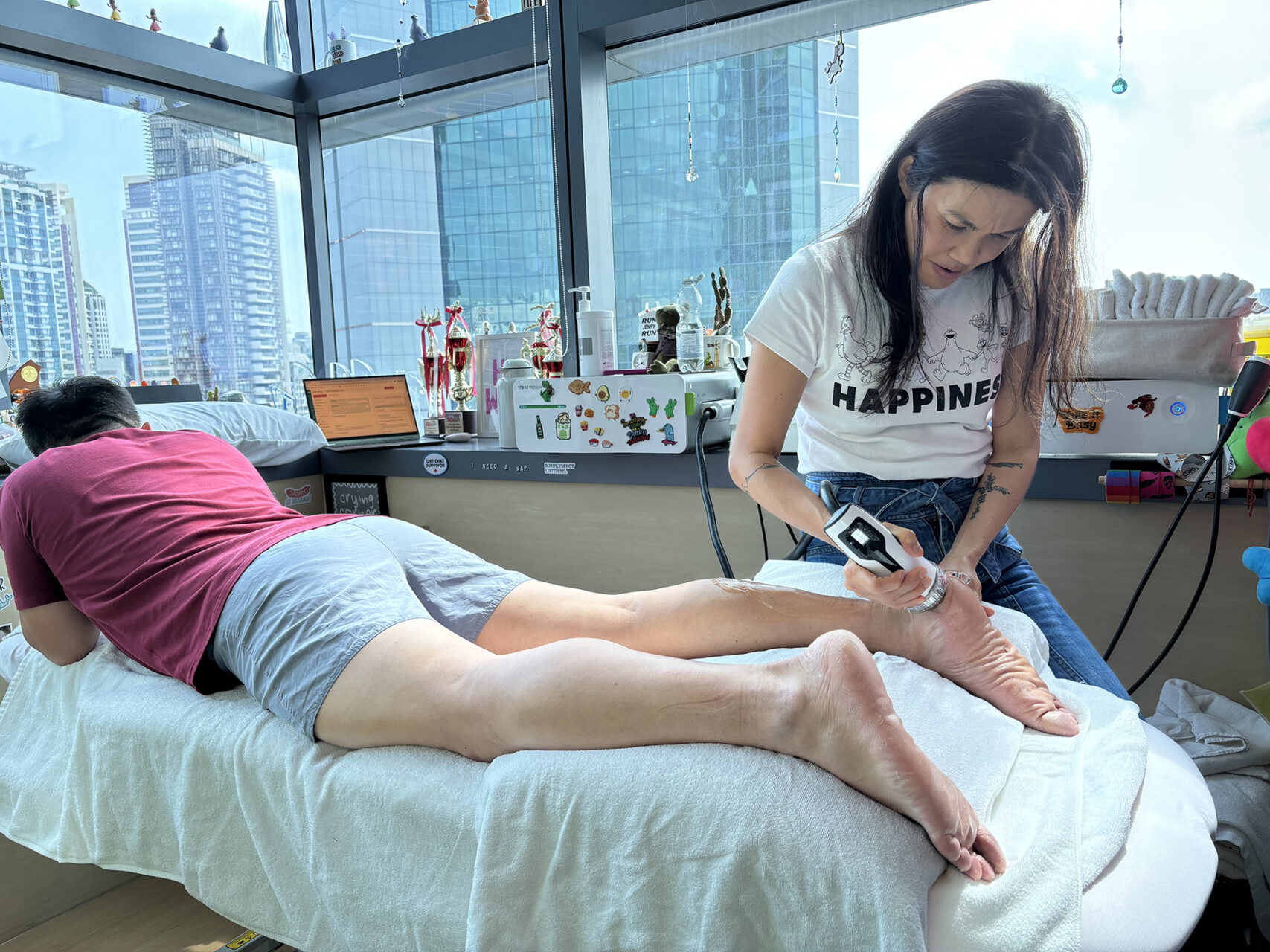
Complications
To prevent complications from Achilles tendonitis or tendinopathy, it’s important to address symptoms early and seek medical advice if pain or swelling persists. Ignoring ongoing symptoms can increase the risk of tendon rupture or chronic pain, which may require more intense treatment.
Those with underlying conditions like psoriatic arthritis should be more vigilant, as they may have a higher risk of Achilles tendon injuries. Working with a healthcare provider allows for a tailored treatment plan which may include physical therapy, Extracorporeal Shockwave Therapy, or other nonoperative treatments to reduce pain and swelling.
Regular monitoring and prompt attention to changes in symptoms can prevent long-term damage and support the Achilles tendon’s overall health.
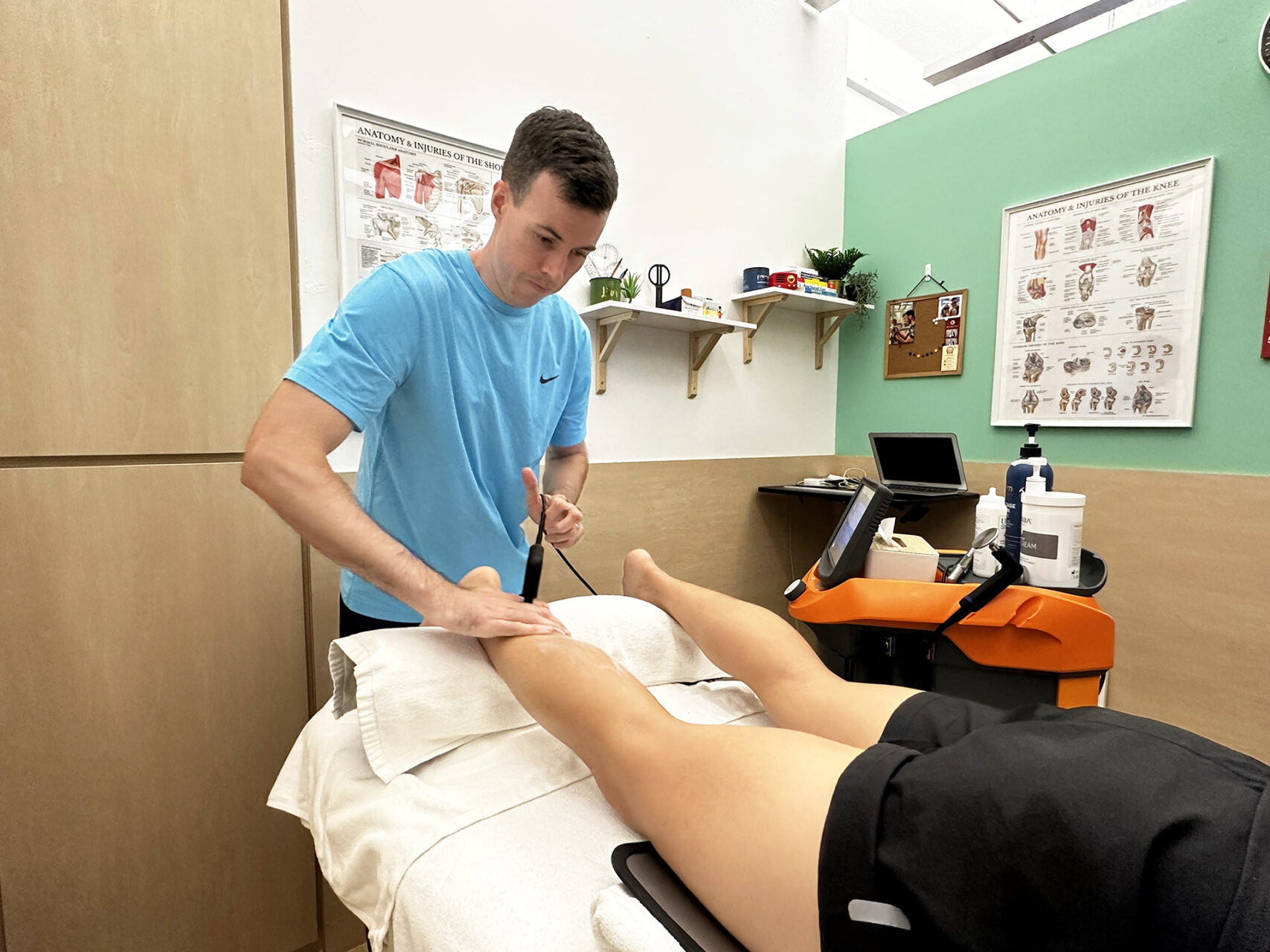
Prevention Tips
Prevention strategies protect your Achilles tendons from injury. Consistent flexibility and strengthening work for the lower limbs is essential. A gradual increase in training volume allows the tendon to adapt and helps prevent repetitive stress that can lead to tendon weakening. Proper warm-up and cool-down routines support tissue health and overall well-being.
Replacing worn-out shoes and avoiding prolonged use of unsupportive footwear are also simple but important steps. Preventing repetitive stress and overuse can reduce the risk of developing heel pain and tendinopathy. Most importantly, early intervention at the first sign of stiffness or pain can prevent progression to chronic Achilles tendinopathy.
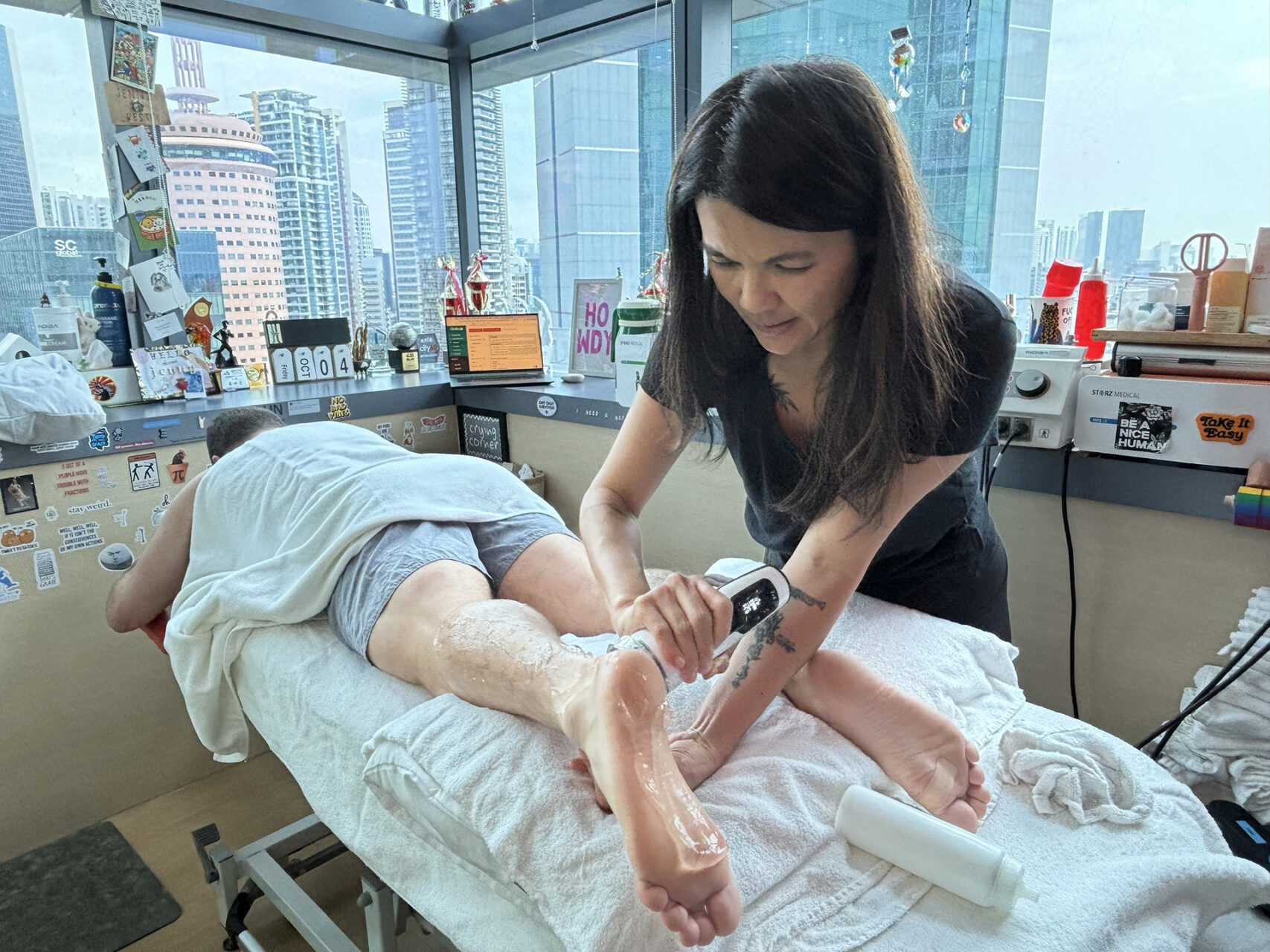
When to See a Physiotherapist
If pain persists beyond 2 weeks despite rest, or if morning stiffness worsens, it’s essential to seek medical attention. Pain that interferes with daily activity or sports, or signs of a potential tendon tear, should be assessed promptly. Early intervention can reduce Achilles tendinopathy recovery time and minimize the risk of Achilles tendinopathy surgery.
HelloPhysio offers tailored Achilles tendinopathy physiotherapy that combines advanced technology with expert rehabilitation to address both symptoms and underlying causes. Book an appointment with HelloPhysio today.

